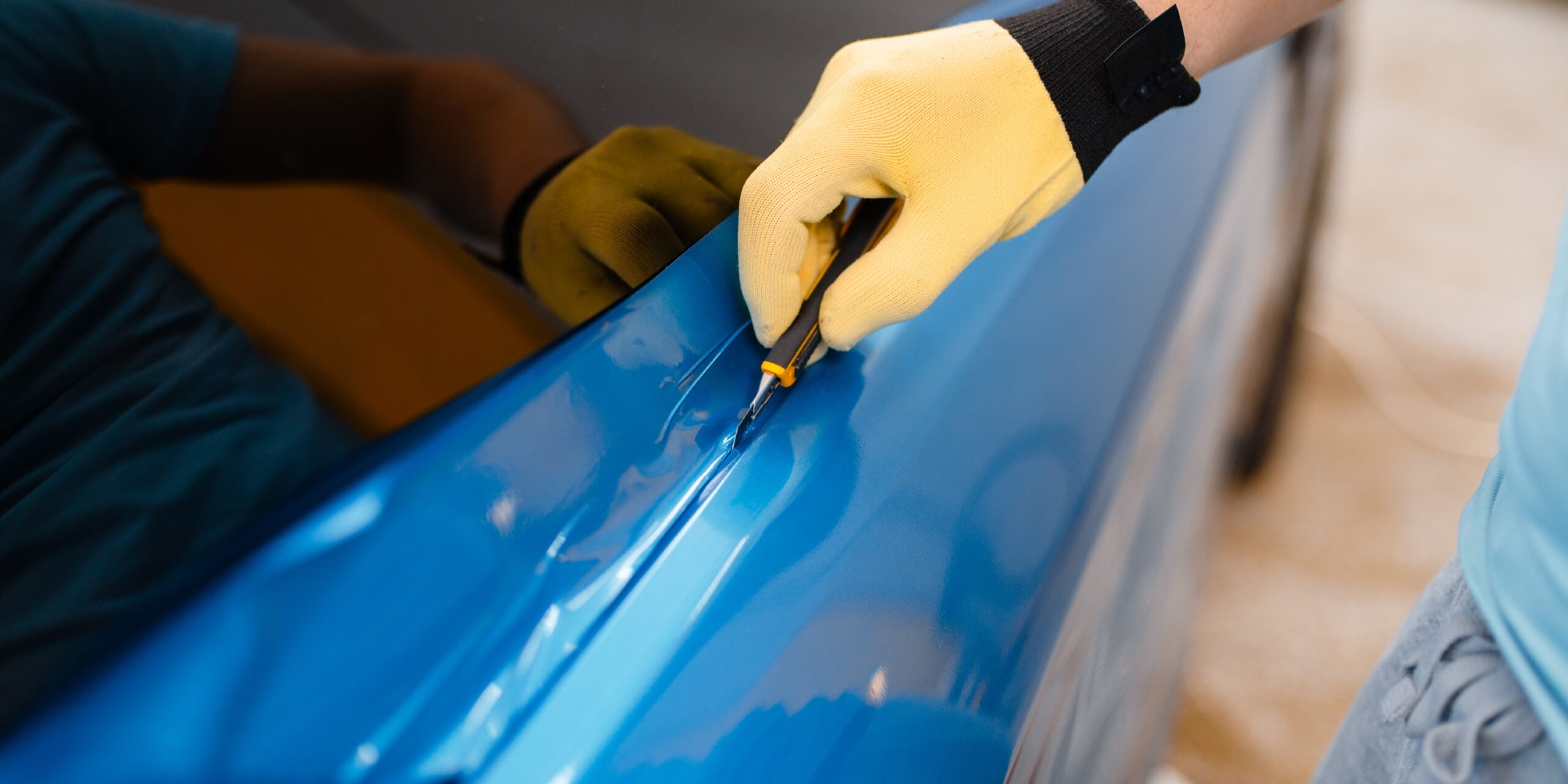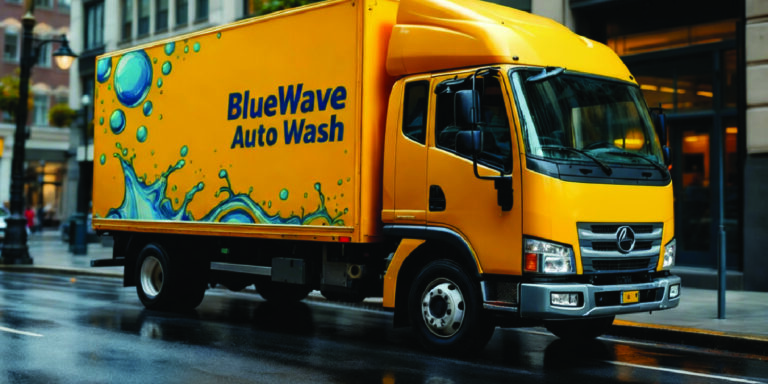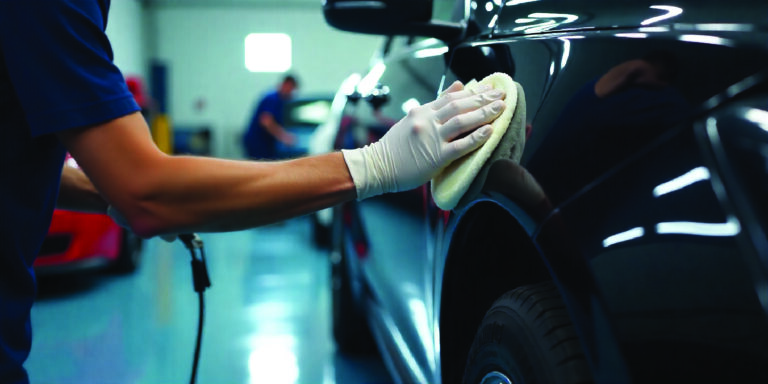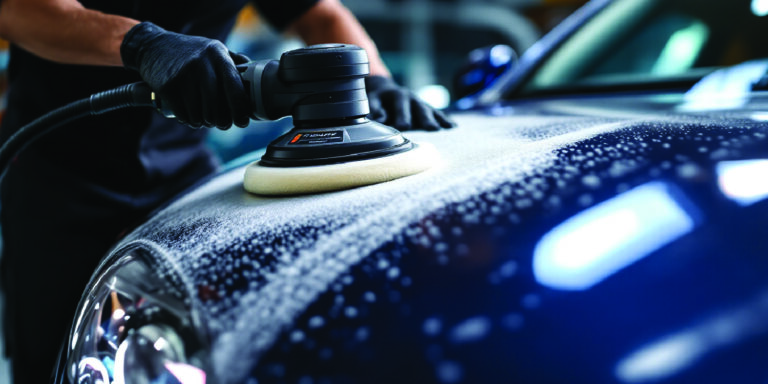Customization is a vital part of our lives nowadays, so how can we neglect our vehicles? The car body wrap has evolved as one of the most adaptable, fashionable, and practical ways to change the appearance of a vehicle without committing to a permanent paint job. Car wrapping is a great way to make your car look new or protect the original paint from everyday wear and tear. It’s important to know what car wrapping is before you start exploring the different options. The size of the vehicle, the type of wrap, design complexity, and installation quality are all factors that influence the cost of a car wrap.
To the casual observer, a wrapped car may look like a freshly painted work of art. However, beneath that flawless surface is a layer of specially developed vinyl material that has been painstakingly applied to fit every contour of your car’s body.
The additional layer of protection is a significant benefit of car body wrapping. The vinyl protects your car’s paint from external pollutants. If you frequently navigate city traffic or park your car outdoors, this protective layer could be a smart investment to maintain your vehicle’s long-lasting appeal.
The temptation of wrapping is strong, but it’s essential to weigh your options carefully before making a commitment. The outcome hinges on the quality of the vinyl, the skill of the installer, and the care taken to maintain the wrap post-installation. A professionally installed wrap made of high-quality materials can last for three to seven years, whereas poorly done jobs may peel or fade within months.
This blog explores the various aspects of car body wraps. Once you know the ins and outs of car wrapping, you can choose the perfect option for your vehicle and budget.
The Car Body Wrapping Process – A Step-by-Step Guide
Understanding the procedure involved in getting a car body wrap can help customers feel more at ease and set realistic expectations. Wrapping a vehicle is an intricate, multi-step procedure that demands accuracy, expertise, and the right materials. While it may appear simple from the outside, each step is important to achieving a smooth, bubble-free finish that lasts for years.
The first and most crucial step is preparation. Before applying any wrap, it is essential to properly sterilize and clean the vehicle. This involves more than just cleaning your car. Professionals use specialized cleaning products to remove wax, grease, tar, and even tiny dirt particles. Any dust residue can make the glue less effective, which might cause bubbles or peeling. You should also fix any little imperfections on the surface, like scratches or dents, before applying the adhesive to make sure it sticks well.
The next step is to measure and cut the vinyl car body wrap according to your design and the shape of your automobile. Full-body wraps with patterns or logos require precise positioning to get a smooth and professional appearance.
The application process is technical and time-consuming. Installers meticulously eliminate air pockets and wrinkles, ensuring a snug, flawless fit. To achieve a smoother finish in certain areas, temporary removal of panels like door handles or bumpers may be necessary.
Overall, the car wrapping procedure involves both craftsmanship and beauty. When done correctly, a high-quality car body wrap improves your vehicle’s appearance, protects the original paint, and adds a layer of individuality or branding. Understanding each stage allows you to appreciate the intricacy involved and ensures you select a professional who will handle your vehicle with the respect it deserves. Contact Colibri Car Styling for more details.
How to Know if Your Car Body Wrap Is Starting to Fail
While a high-quality car body wrap can last for years with proper care, you should be aware of the early signs of wear and tear. Vinyl wraps do not fail overnight. They usually reveal visual signs that things may not be quite right. Identifying these issues early allows you to take suitable action, whether it’s a minor repair, a partial rewrap, or a complete replacement.
Edge Lifting at Corners and Seams
One of the first and most obvious indicators of wrap failure is when the vinyl begins to separate from the car’s surface, especially around sharp curves, door edges, and bumpers. Edge lifting usually begins slowly, but if neglected, the peeling can spread. Typically, this happens due to insufficient surface preparation, weak adhesive bonding, or prolonged exposure to excessive moisture and heat. When debris, dust, or water seeps in beneath the open edges, it can further damage the wrap.
Bubbling or Air Pockets
Bubbles also indicate a damaged car body wrap. While a few tiny air pockets may develop soon after installation and disappear quickly, persistent or increasing bubble formation is a problem. This could be due to incorrect application, dirty surfaces, or poor adhesives. Bubbles look bad and damage the wrap’s adhesive, causing bigger sections of the vinyl to peel off.
Fading or Discoloration
Vinyl car body wraps are UV-resistant. However, fading and discoloration can occur over time, especially if your car is regularly parked outside. Low-quality vinyl or exposure to extreme weather can speed up this process. You might notice uneven patches of colour, a dull appearance, or that the original colour is visible. Fading not only reduces the wrap’s visual attractiveness, but also indicates it is losing its protective properties.
Car Wrap Myths Customers Should Ignore
Misconceptions and false beliefs about car body wraps persist despite their growing popularity. These beliefs often lead to unnecessary confusion or deter people from discovering the true benefits of wrapping their vehicle. When thinking about getting a car wrap, whether it’s a full colour change or just a logo, it’s important to differentiate fact from fiction.
Myth: Car body wraps Damage the Original Paint
This is probably the most common misconception. A professionally installed car body wrap preserves rather than damages the existing paint. High-quality vinyl protects your car’s paint against UV radiation, scratches, and mild road debris. The key is proper installation and upkeep. If the original paint is in good condition and the wrap is properly removed, the surface can appear as new as the day it was wrapped.
Myth: Wrapped Cars Can’t Be Washed
Many consumers believe that once their vehicle wrap has been applied, they cannot wash it. This is not true. Wrapped cars can and should be washed regularly, but only with the correct methods. Hand cleaning with pH-neutral soap and a soft microfiber cloth is the most effective approach to preserve the wrap’s finish. To avoid lifting, it’s best to avoid using abrasive sponges or high-pressure water jets, particularly near edges.
Myth: Wraps Are Permanent and Hard to Remove
Another myth is that car body wraps are difficult to remove and leave a sticky residue. Quality vinyl wraps are removable, especially when handled by experts. They may be removed cleanly using the appropriate amount of heat and tools, keeping the original paint in great condition. One of the key advantages of wrapping instead of repainting is the ability to transform your vehicle’s appearance whenever you want.
Conclusion
Car body wraps have transformed the way we think about personalizing our vehicles. They perfectly blend beauty, protection, and flexibility. Vehicle wrapping offers various advantages without the permanence of a traditional paint job. The vast array of wrap finishes, textures, and design options makes them incredibly versatile.
Understanding the various types of wraps and materials, as well as recognizing symptoms of wear and correctly maintaining the wrap, will help you get the most out of your investment. It’s also critical to select a reputable installer who uses high-quality materials and adheres to the best standards, since this will significantly impact the longevity and overall appearance of your wrap.
Finally, a well-executed car body wrap not only improves the beauty of your vehicle but also provides a layer of protection and is an effective branding tool for businesses. If you’re searching for an affordable and innovative way to rejuvenate your car, wrapping is an excellent option.





